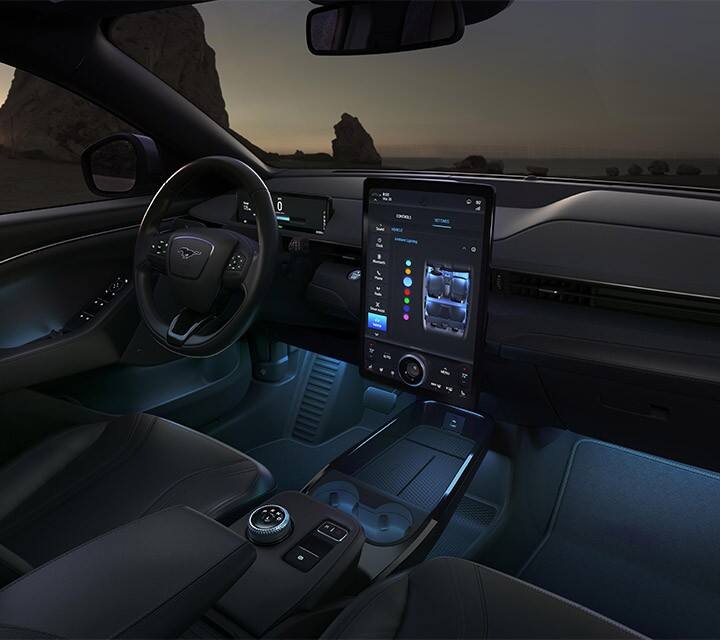At SEMI’s 2020 Industry Strategy Symposium (ISS), held January 12-15th at Half Moon Bay in California, Ken Washington, CTO, Ford Motor Company, who described a vision for cars of the future and their requirements when it comes to connectivity and compute power.
Washington gave an interesting perspective on what’s happening in the automotive world, which he likened in importance to Henry Ford’s automated assembly line that dramatically changed in the world in the early 1900s. “Electrifying our vehicles, connecting them, automating them, and changing the whole mobility experience, including shared mobility, is going to do the same thing. It’s going to fundamentally change how the industry thinks about itself, and how consumers think about the automobile industry,” he said.
“We all expect when we use our smart phones or when we go into our connected smart home or even our smart offices today, that we have seamless, frictionless access to information at the touch of a button or at the utterance of a statement,” he continued. “Why would you expect anything different when you get into your vehicle? Well, you don’t. That’s what the revolution is about. It’s about changing the experience when you get on the inside of a vehicle.”
At CES, Ford introduced the new Mustang Mach-E, a 300-mile battery electric vehicle with a completely rearchitected electrical ecosystem, a redesigned infotainment system, and a 17-inch screen enabled by a next generation AI-powered digital voice capability (Figure 1). “It’s got a whole new way of automating and assisting the driver with a next generation driver assist technology,” Washington said. “All of that is being empowered and enabled by new ways of designing and bringing experiences to our customers.”

Washington said today’s auto-makers – all of which have a heightened presence in Silicon Valley – must be as much about software development as car manufacturing. “We moved from this era of Henry Ford where we’ve been process-driven. We’re in the platform driven era,” he said. “In the platform driven era, if you don’t have a platform which is driven by the confluence of technologies that include data, AI, software, and connectivity, and harnessing that to delivering valued platform, you’re not going to make electrified vehicles that are profitable.” Auto-makers have the extra responsibility of safety requirements defined by ASIL, and sourcing electronic parts that are reliable and long-lasting (10 years or more).
Today’s cars also rely on connectivity. “We believe that the solution for smart vehicles being connected to the rest of the smart world hinges on our ability to deploy at scale LTE-based Cellular V2X today and 5G tomorrow. Right now, we’re in a bit of a dialogue about who’s going to have access to that bandwidth in the 5.9 gigahertz band,” he said. “The good news is the proposal on the table today from the FCC opens up the 5.9 band for use of Cellular V2X, which today is not allowed. It’s just DSRC. So that’s a good step. We want that to go further.
“It’s my hope that it will ultimately lead to an enabling of 5G in the sub-6 band for automotive use and for many other uses. But it’s going to require us to assure that we cannot have dangerous interference and we’ve got adequate bandwidth available for safety applications,” he added.
Washington also pointed to the increased use of sensors in cars, particularly in the cabin. “A lot of them have to do with what’s happening inside of the vehicle, what’s happening with the occupant, how we make the experience inside a good experience, and how we bring digital life events into the car,” he said.
The auto industry is rethinking how it addresses the electrical network inside the car. “The Mach-E is the first Ford vehicle that will benefit from what we call our second-generation new electrical architecture,” Washington said. The plan is to eventually have a few compute clusters in the vehicle with edge mirrored edge capability. With that, Washington said he could imagine “replacing the actuators on a fairly rapid cadence and also implementing new features much more rapidly so to deliver hardware at the speed of software. This is where we’re going with our electrical architectures. It’s going to enable things like our next gen driver assist technologies to advance at the speed that we need it to without having to go back and redesign the electrical system to accommodate the next generation driver assist box, or for adaptive cruise control, or for level three Blue Zone highway driving, or whatever it might be.”
Also see: